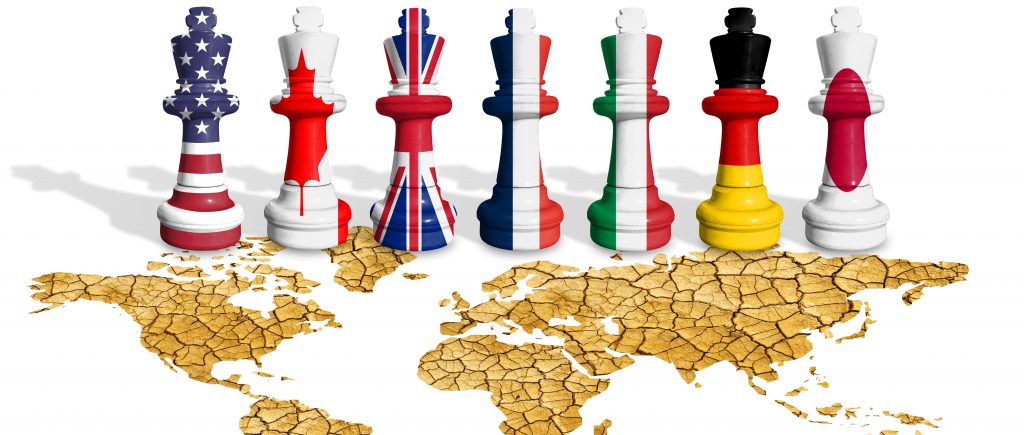President Donald Trump’s attendance at the Group of Seven (G-7) summit in Canada on June 16, 2025, unfolds against a volatile global landscape marked by U.S. tariffs, the Israel-Iran conflict, and domestic political unrest. His calls for Iran to negotiate a nuclear deal, alongside provocative suggestions to reshape the G-7 by including Russia and China, challenge alliances and spark market ripples. These bold moves, paired with trade talks and domestic controversies, underscore Trump’s disruptive approach at a critical diplomatic juncture.
Trade Tensions and Tariff Strategies
Trump’s bilateral meeting with Canadian Prime Minister Mark Carney at the G-7 summit centers on forging a U.S.-Canada trade deal, despite clashing visions. Trump acknowledged Carney’s differing “concept” but expressed confidence in reaching an agreement, emphasizing trade as a priority. The U.S.’s 10 percent universal tariff, tempered by a 90-day reduction with China, remains a sore point for G-7 allies. Carney lauded Trump’s grasp of global economic shifts, yet tariff disputes strain cohesion. Market reactions reflect this unease: the US Dollar Index (DXY) dipped 0.17% to 97.97, while gold prices fell 0.99% to $3,399.50, signaling a risk-on mood despite trade uncertainties.
Israel-Iran Crisis Escalates
The intensifying Israel-Iran conflict dominates summit discussions. Trump urged Iran to negotiate a nuclear deal, stating, “Iran is not winning this war, and they should talk before it’s too late,” noting Tehran’s interest in de-escalation. Iranian Foreign Minister Abbas Araghchi countered, urging Trump to restrain Israeli Prime Minister Benjamin Netanyahu to avoid “unimaginable consequences.” Israeli strikes, including one on Iran’s state broadcaster IRIB, and Iran’s missile volleys on northern Israel heighten tensions. Israeli Defense Minister Israel Katz vowed to target Iran’s regime “everywhere,” claiming a 50 percent reduction in Iran’s ballistic missile threat. Trump’s refusal to endorse a G-7 de-escalation statement aligns with his focus on blocking Iran’s nuclear ambitions, complicating diplomacy and fueling market volatility.
Domestic Turmoil Shadows Summit
Trump’s domestic policies amplify his G-7 presence. His directive to prioritize deportations in Democratic-led “sanctuary cities,” following nationwide protests, reinforces his immigration stance. The arrest of Vance Boelter for the politically motivated shooting of two Democratic lawmakers and their spouses in Minnesota, killing two, underscores U.S. polarization. This violence, coinciding with Trump’s summit arrival, raises questions about domestic stability, indirectly shaping allies’ views. Trump’s proposal to reintegrate Russia into the G-7, opposed by allies since its 2014 expulsion, and his suggestion to include China further strain traditional partnerships, reflecting his penchant for shaking up global forums.
G-7’s High-Stakes Diplomacy
The G-7, set in Alberta’s Rockies, navigates a fraught agenda. Carney’s opening remarks stressed collaboration, but Trump’s expansionist ideas—echoed by his Greenland ambitions, rebuffed by French President Emmanuel Macron—highlight discord. Meetings with German Chancellor Friedrich Merz and British Prime Minister Keir Starmer offer opportunities to ease tensions, but Trump’s tariff and foreign policy stances challenge unity. Markets remain jittery, with the S&P 500 and Nasdaq hitting daily highs despite geopolitical risks. Trump’s push for Iran talks and G-7 reform, paired with trade and domestic controversies, will shape alliances and global markets, demanding deft navigation in a world on edge.

 Noor Trends News, Technical Analysis, Educational Tools and Recommendations
Noor Trends News, Technical Analysis, Educational Tools and Recommendations




